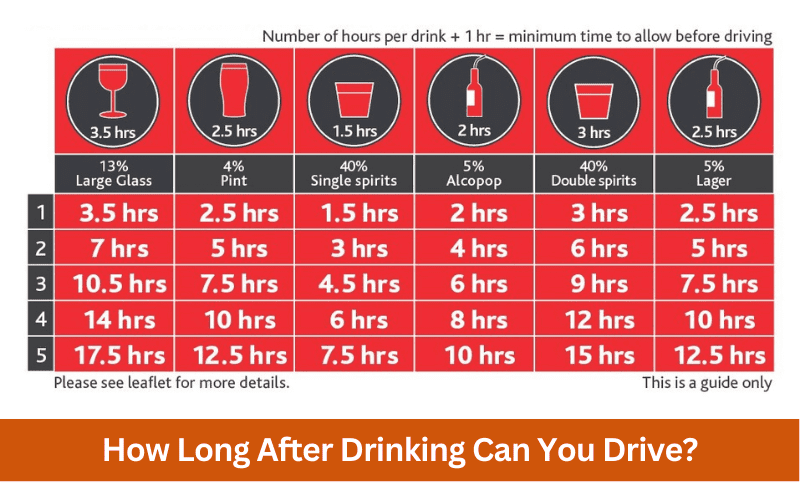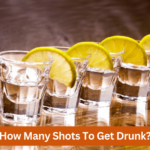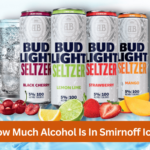Have you ever found yourself at a social gathering with friends, having a few drinks and wondering, how long after drinking can you drive? It’s a common question that often comes up when alcohol is involved, especially if you’re the designated driver. I remember one night when I had a few drinks with my friends and thought I was fine to drive home. But as soon as I got behind the wheel, I realized my judgment and reaction time were not what they should be. It was a scary moment that made me question how much I really knew about the effects of alcohol on driving. So, let’s explore this topic and find out just how long after drinking can you drive.
Understanding Definition of Blood Alcohol Concentration (BAC)
Blood alcohol concentration (BAC) is a measure of the amount of alcohol in a person’s bloodstream. It is expressed as a percentage by volume of alcohol in the blood. The level of BAC increases with the amount of alcohol consumed and the rate at which it is consumed.
According to the National Institute on Alcohol Abuse and Alcoholism (NIAAA), a BAC level of 0.08% or higher is considered illegal for drivers in the United States. At this level, driving ability can be impaired, and the risk of a crash is significantly increased. Additionally, even at lower BAC levels, driving ability can be affected, and the risk of a crash can still be elevated.
Factors That Affect BAC
Several factors can affect Blood Alcohol Concentration (BAC) levels, which is the amount of alcohol in a person’s bloodstream. Some of the key factors include:
- Gender: Women tend to have a lower BAC than men due to differences in body composition and metabolism.
- Body weight: BAC tends to be higher in individuals with less body weight as they have less water in their bodies to dilute alcohol.
- Rate of consumption: Consuming alcohol quickly can lead to a higher BAC as the liver can only process a certain amount of alcohol per hour.
- Type of alcoholic beverage: Different types of alcohol have varying alcohol content, with spirits having higher alcohol content than beer and wine.
- Food consumption: Eating food before or during drinking can slow down the absorption of alcohol, leading to a lower BAC.
- Medications: Certain medications can interact with alcohol, increasing the risk of side effects and raising BAC levels.
- Genetics: Some individuals may have a genetic predisposition to metabolize alcohol differently, leading to higher or lower BAC levels.
It is important to note that these factors can vary from person to person and can affect BAC levels differently. It is recommended to avoid drinking and driving altogether to ensure the safety of oneself and others on the road.
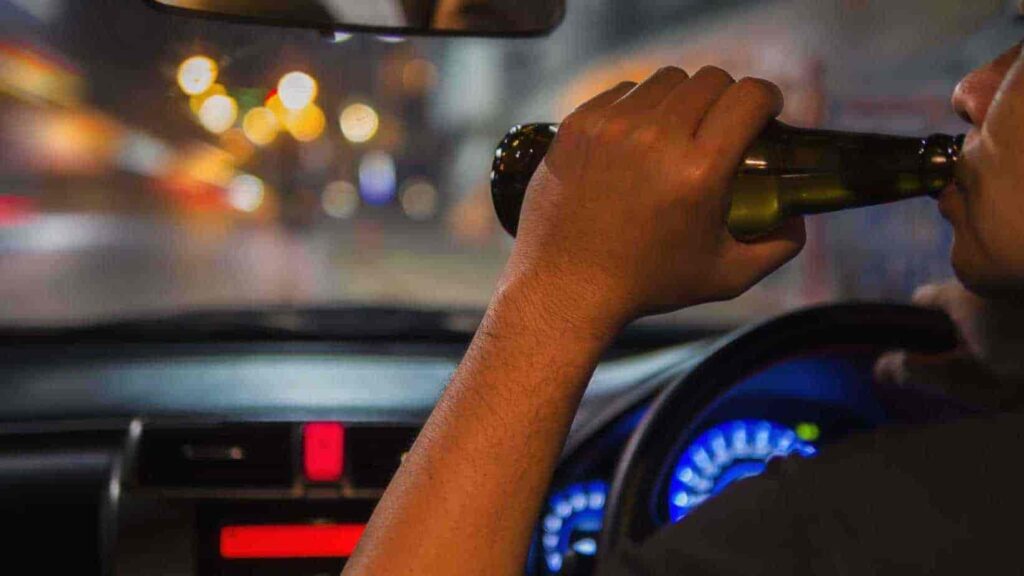
The Effects of Alcohol on Driving
Alcohol consumption can significantly impair a person’s ability to drive safely. The following are some of the most common effects of alcohol on driving:
- Slowed reaction time: Alcohol can delay a driver’s reaction time, making it more difficult to respond quickly to changing traffic conditions.
- Impaired judgment and decision-making: Alcohol can impair a driver’s ability to make rational decisions and judgments, leading to poor choices while driving.
- Reduced coordination: Alcohol can affect a driver’s coordination, making it more challenging to control the vehicle’s speed, direction, and movement.
- Decreased concentration: Alcohol can make it challenging to maintain focus on the road and other driving-related tasks, leading to distracted driving and other safety issues.
- Visual impairment: Alcohol can affect a driver’s vision, leading to blurred or double vision, reduced peripheral vision, and difficulty seeing at night.
- Increased risk-taking behavior: Alcohol can cause a driver to take more risks than usual, such as driving at high speeds, making sudden lane changes, or ignoring traffic signals and signs.
How Long Does It Take for Alcohol to Leave Your Sc
How long to wait to drive after 1 beer?
It’s difficult to give an exact timeframe as the amount of time it takes for alcohol to leave your system can vary depending on a variety of factors such as your weight, gender, and metabolism. However, as a general rule, it’s recommended that you wait at least one hour for every standard drink you have before driving.
How long after a glass of wine can I drive?
It takes approximately one hour for the body to metabolize one standard drink of alcohol, which is equivalent to a 5-ounce glass of wine with 12 ABV. Therefore, if you consume one glass of wine, you should wait at least one hour before driving.
How long after a bottle of wine can you drive?
If you had a casual bottle of red or white wine, it’s recommended that you wait at least 8 hours after your final glass before driving. This is because a bottle of wine contains multiple standard drinks, and it can take several hours for your body to process and eliminate the alcohol. Remember that everyone’s body is different, so this is just a rough guideline and it’s always better to err on the side of caution when it comes to driving after drinking.
How long after 3 drinks can I drive?
It takes about one hour for the body to metabolize one standard drink of alcohol. Since three drinks contain roughly three standard drinks of alcohol, it can take approximately three hours for the body to process this amount.
However, this is just an estimate, and it is essential to remember that alcohol can affect everyone differently. It is always best to err on the side of caution and wait until a person’s BAC is below the legal limit before driving.
How long after heavy drinking can you drive?
Heavy drinking can significantly increase the time it takes for the body to metabolize alcohol, and it is recommended that individuals wait at least 24 hours after heavy drinking before driving to ensure that their BAC is below the legal limit and that their driving abilities are not impaired.
How long after drinking can I drive the next day?
How long a person needs to wait before driving the next day after drinking depends on many things, such as how much and what kind of alcohol they drank, their gender, weight, metabolism, and how quickly they drank.
If someone drank a lot of alcohol the night before, they should wait at least 12 hours before driving to make sure their blood alcohol concentration (BAC) is below the legal limit and that they can drive safely. But it’s important to remember that alcohol can still make it hard to drive even after the BAC is back to zero. People should be careful and make sure they are fully awake and alert before driving.
Factors That Affect How Long Alcohol Stays in Your System
Several factors can affect how long alcohol stays in the body, including:
- Gender: Women tend to have a lower alcohol metabolism rate than men, which can lead to a longer presence of alcohol in their system.
- Body weight: Individuals with less body weight have less water in their bodies to dilute alcohol, which can lead to higher BAC levels and a longer presence of alcohol in their system.
- Type of alcohol: Different types of alcohol have varying alcohol content, with spirits having higher alcohol content than beer and wine, which can affect how long alcohol stays in the body.
- Rate of consumption: Consuming alcohol quickly can lead to a higher BAC and a longer presence of alcohol in the system.
- Food consumption: Eating food before or during drinking can slow down the absorption of alcohol, which can lead to a lower BAC and a shorter presence of alcohol in the system.
- Metabolism: The rate at which the body metabolizes alcohol can vary from person to person, which can affect how long alcohol stays in the system.
- Liver function: The liver is responsible for metabolizing alcohol, and if it is damaged, the body may take longer to process and eliminate alcohol from the system.
Testing for Alcohol Impairment
Several tests are used to determine if an individual is impaired by alcohol, including:
- Field Sobriety Tests (FSTs): These tests are conducted by law enforcement officers to evaluate an individual’s balance, coordination, and other signs of impairment. The most common FSTs include the walk-and-turn test, the one-leg stand test, and the horizontal gaze nystagmus test.
- Breathalyzer Test: This test measures the amount of alcohol in an individual’s breath and provides an estimate of their Blood Alcohol Concentration (BAC). Breathalyzer tests are commonly used by law enforcement officers to determine if an individual is driving under the influence of alcohol.
- Blood Test: This test measures the amount of alcohol in an individual’s blood and provides an accurate measurement of their BAC. Blood tests are typically administered by medical professionals and can be used in legal proceedings to determine if an individual was driving under the influence of alcohol.
Note that the results of these tests can vary depending on several factors, including the accuracy of the testing equipment, the training and experience of the person administering the test, and the individual’s physical and mental condition at the time of testing.
Tips for Safe Driving After Drinking
It is always best to avoid drinking and driving altogether, but if an individual has consumed alcohol, the following tips can help them drive safely:
- Wait until sober: Individuals should wait until their BAC is below the legal limit before driving. As a general rule of thumb, it takes approximately one hour for the body to metabolize one standard drink of alcohol.
- Use alternative transportation: If planning to drink, individuals should arrange for a designated driver, use a taxi or ride-sharing service, or use public transportation to ensure their safety and the safety of others on the road.
- Eat food: Eating food before or during drinking can slow down the absorption of alcohol and reduce the risk of impaired driving.
- Avoid distractions: Drivers should avoid any distractions that could take their focus away from the road, such as using a mobile phone or adjusting the radio.
- Follow traffic laws: Drivers should obey all traffic laws and signals, including speed limits, stop signs, and traffic lights.
- Wear a seatbelt: Drivers and passengers should always wear seatbelts while in the car.
- Be aware of medications: Some medications can interact with alcohol and impair driving abilities. Individuals should check with their healthcare provider before drinking while taking medication.
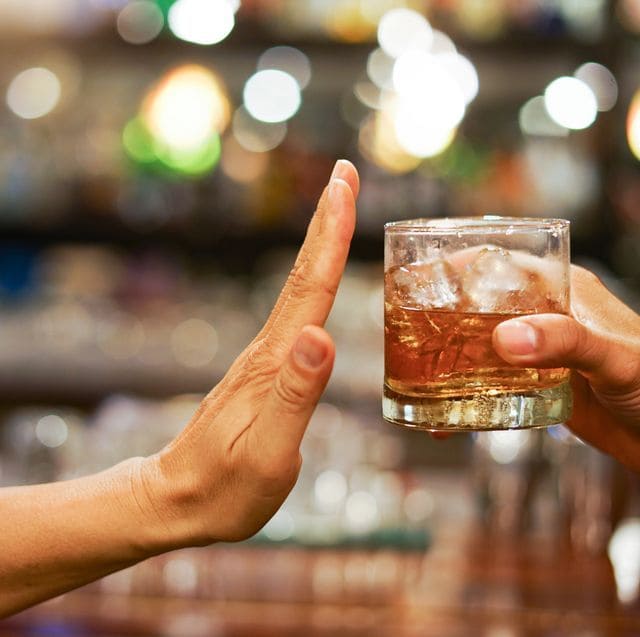
DUI Laws and Penalties
DUI (Driving Under the Influence) laws prohibit individuals from operating a vehicle while under the influence of alcohol or drugs. Penalties for DUI vary depending on the state and the severity of the offense.
Typically, a first-time offender can expect fines, license suspension, and possibly jail time. Repeat offenders may face more severe penalties, including longer license suspension, mandatory alcohol education or treatment programs, and longer jail sentences.
In addition to criminal penalties, individuals convicted of DUI may also face increased insurance rates, difficulty finding employment, and damage to their reputation.
It is important to remember that DUI laws are in place to ensure the safety of all individuals on the road. To avoid legal and personal consequences, individuals should always avoid drinking and driving and use alternative transportation options if they plan to consume alcohol.
Myths and Misconceptions about Alcohol and Driving
There are several myths and misconceptions about alcohol and driving that can be dangerous and put individuals at risk. Here are some of the most common ones:
- “I can drive after just one drink.” Any amount of alcohol can impair driving abilities and increase the risk of accidents. It is always best to avoid driving after consuming any amount of alcohol.
- “I can sober up quickly by drinking coffee or taking a cold shower.” These methods may help individuals feel more alert, but they do not reduce the amount of alcohol in the body or sober up a person quickly enough to drive safely.
- “I can drive better after a few drinks.” Alcohol impairs judgment, coordination, and reaction time, making it more difficult to drive safely. Drinking alcohol does not improve driving abilities.
- “I can trick a breathalyzer by sucking on a penny or holding my breath.” These methods do not work and can actually harm individuals by causing them to inhale dangerous chemicals.
- “I won’t get caught if I only drive on back roads.” Law enforcement officers patrol all roads, and driving under the influence is illegal no matter where it occurs.
Remember that drinking and driving can have serious consequences, including accidents, injuries, and legal penalties. To ensure their safety and the safety of others on the road, individuals should always avoid drinking and driving and use alternative transportation options if they plan to consume alcohol.
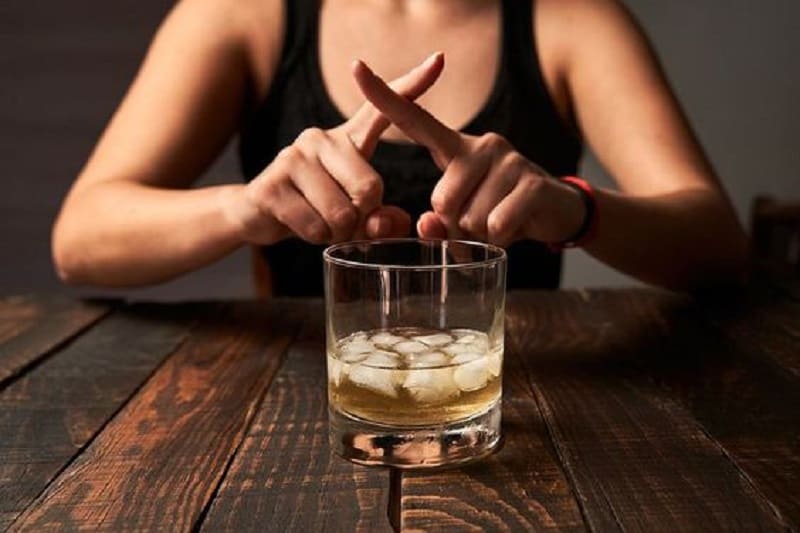
The Consequences of Drunk Driving
Drunk driving can have serious and sometimes fatal consequences. When an individual operates a vehicle while under the influence of alcohol, their ability to safely operate the vehicle becomes impaired. This impairment can lead to a number of negative outcomes, including:
- Accidents: Drunk driving increases the likelihood of accidents, as the impaired driver may be unable to react in time to avoid obstacles or other vehicles on the road. These accidents can be severe and result in injuries or fatalities.
- Legal consequences: Driving under the influence of alcohol is illegal in most jurisdictions, and can result in legal consequences such as fines, license suspension, and even imprisonment.
- Financial consequences: If a drunk driver causes an accident, they may be held financially responsible for the damages incurred, including property damage, medical bills, and lost wages.
- Personal consequences: A drunk driving accident can have a profound impact on the driver’s personal life, including relationships, employment, and mental health.
- Injury and death: Drunk driving accidents can result in serious injuries and fatalities, not only for the driver, but also for other drivers, passengers, and pedestrians who may be involved in the accident.
You should remember that drunk driving is entirely preventable. If you plan to drink, make sure you have a designated driver or alternative transportation arranged. If you suspect that someone else is driving under the influence, do not hesitate to contact the authorities. By taking responsibility for your own actions and looking out for the safety of others, you can help prevent the tragic consequences of drunk driving.
FAQs
Can you fail a breathalyzer 12 hours after drinking?
It is unlikely to fail a breathalyzer 12 hours after drinking, as the body typically metabolizes one standard drink of alcohol per hour. However, this can vary depending on several factors, such as the amount and type of alcohol consumed, gender, body weight, metabolism, and the rate of consumption.
How do you know if you are sober enough to drive?
The safest way to know if you are sober enough to drive is to wait until your Blood Alcohol Concentration (BAC) is below the legal limit, which in the United States is 0.08%. As a general rule of thumb, it takes approximately one hour for the body to metabolize one standard drink of alcohol. Personal breathalyzer devices can also provide an estimate of your BAC.
How many drinks should you not drive after?
It is recommended that individuals avoid driving after consuming any amount of alcohol. Even small amounts of alcohol can impair driving abilities and increase the risk of accidents.
Is 6 hours long enough to pass a breathalyzer?
Six hours should be long enough to pass a breathalyzer test after consuming alcohol, but this can vary depending on several factors, such as the amount and type of alcohol consumed, gender, body weight, metabolism, and the rate of consumption.
Can drinking water help you pass a breathalyzer?
Drinking water may help dilute the alcohol in your system and lower your BAC, but it will not significantly affect the results of a breathalyzer test.
Can I pass a breathalyzer after 1 hour?
It is possible to pass a breathalyzer test after one hour, depending on several factors, such as the amount and type of alcohol consumed, gender, body weight, metabolism, and the rate of consumption.
Does brushing teeth affect breathalyzer?
Brushing teeth or using mouthwash can affect the results of a breathalyzer test by introducing alcohol from the mouth into the sample. It is recommended to wait at least 15 minutes after brushing or using mouthwash before taking a breathalyzer test.
How long does it take to go from .08 to 0?
It takes approximately one hour for the body to metabolize one standard drink of alcohol and reduce the BAC by 0.015%. Therefore, it can take approximately 5-6 hours for the BAC to return to zero after reaching 0.08%.
Can medication affect BAC levels?
Yes, some medications can interact with alcohol and increase the effects of alcohol on the body. It is important to check with a healthcare provider before drinking while taking medication.
What are some alternatives to drinking?
There are several alternatives to drinking alcohol, such as drinking non-alcoholic beverages, participating in activities that do not involve alcohol, or using alternative transportation options if going out with friends who plan to drink.
Conclusion
In conclusion, the question of how long after drinking can you drive is a critical one that we all need to consider. Drinking and driving is not only illegal, but it’s also dangerous and can lead to severe consequences. As someone who has seen the effects of drunk driving firsthand, I cannot stress enough the importance of making responsible decisions when it comes to drinking and driving. It’s crucial to know my limits and know how many hours after drinking can I drive. Always have a plan for alternative transportation, whether it’s a designated driver or public transportation. Remember that your safety and the safety of others on the road are at stake. Let’s make responsible decisions and prevent unnecessary accidents and tragedies.
I’m Chen Mina, from Vol de Nuit, who has a special passion for bartending, especially mixing wine, beer, and cooktail. Here you will find content about alcoholic beverages, I will bring you knowledge that few people know about this drink.

